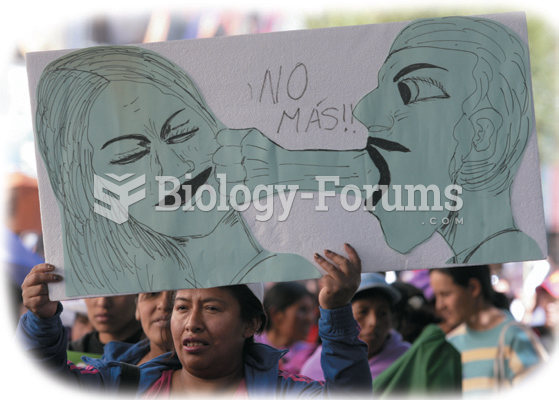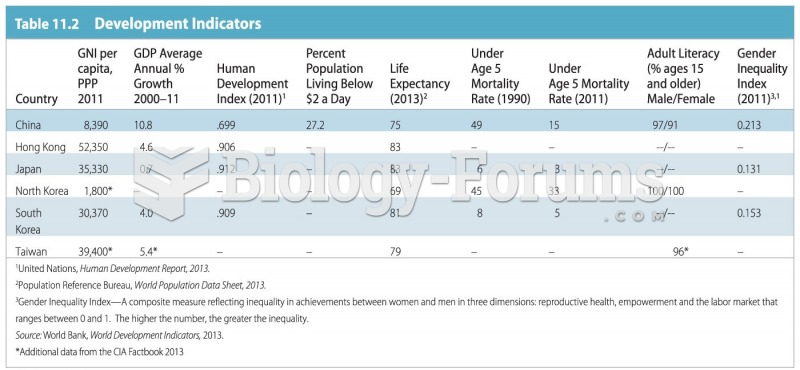|
|
|
Vital signs (blood pressure, temperature, pulse rate, respiration rate) should be taken before any drug administration. Patients should be informed not to use tobacco or caffeine at least 30 minutes before their appointment.
Everyone has one nostril that is larger than the other.
Nitroglycerin is used to alleviate various heart-related conditions, and it is also the chief component of dynamite (but mixed in a solid clay base to stabilize it).
In inpatient settings, adverse drug events account for an estimated one in three of all hospital adverse events. They affect approximately 2 million hospital stays every year, and prolong hospital stays by between one and five days.
Illness; diuretics; laxative abuse; hot weather; exercise; sweating; caffeine; alcoholic beverages; starvation diets; inadequate carbohydrate consumption; and diets high in protein, salt, or fiber can cause people to become dehydrated.
 The research methods that sociologists choose depend partially on the questions they want to answer. ...
The research methods that sociologists choose depend partially on the questions they want to answer. ...
 What a tremendous photo for sociologists! Seldom are we treated to such cultural contrasts. Can you ...
What a tremendous photo for sociologists! Seldom are we treated to such cultural contrasts. Can you ...





